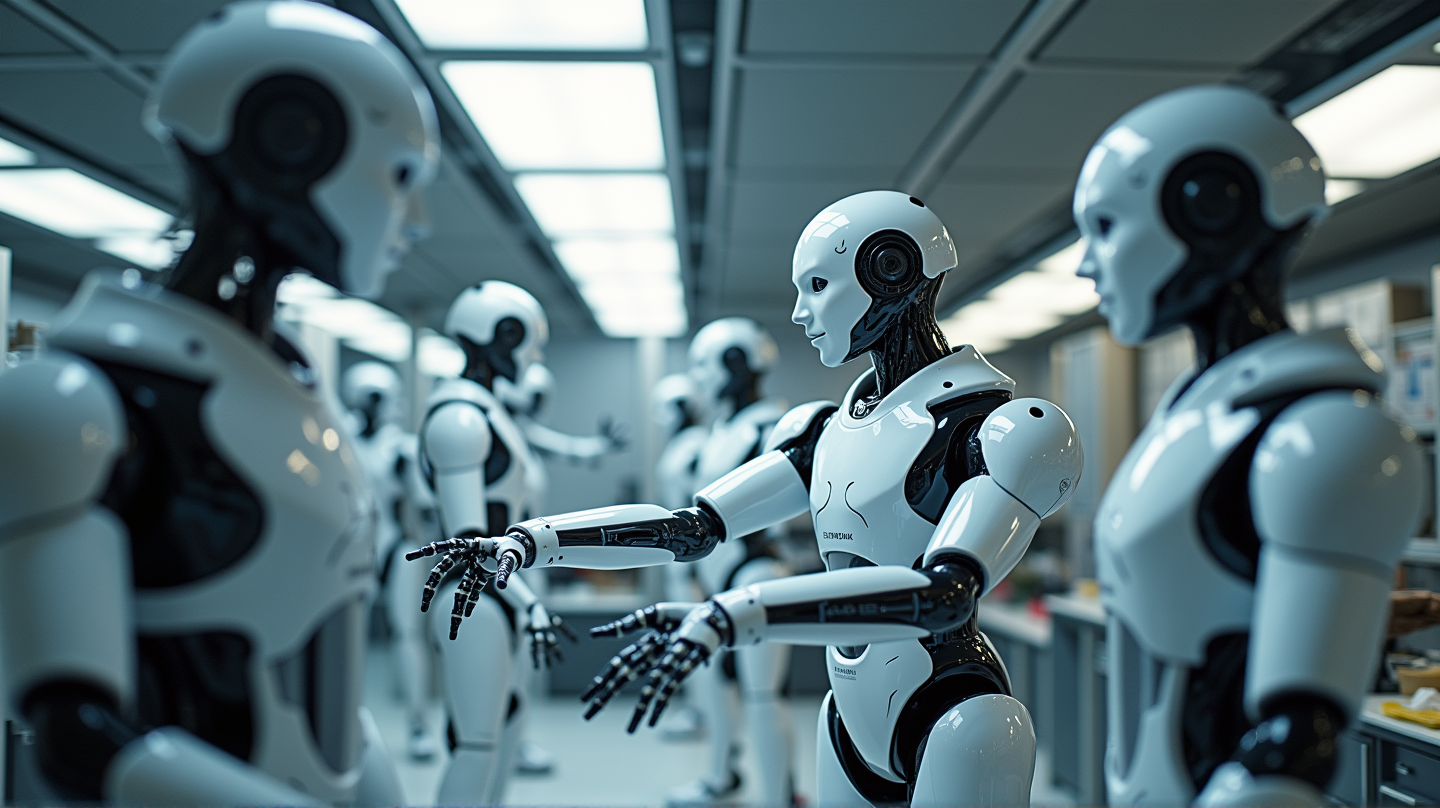In an exciting leap towards the future of robotics, NVIDIA has introduced cutting-edge open-source technologies aimed at transforming the way humanoid robots learn and adapt. These advancements promise to bridge the gap between the digital science world and reality.
Newton Physics Engine Revolutionizes Simulation
A groundbreaking release known as the Newton Physics Engine has been unveiled, setting a new standard for physical simulations in robotics. Codeveloped by industry giants such as Google DeepMind and Disney Research, Newton allows unprecedented precision for simulating complex robotic actions across various terrains and environments. This engine is essential for teaching robots the nuances of movement and balance in real-world settings.
Isaac GR00T N1.6: The Robot Brain with Humanlike Reasoning
The introduction of NVIDIA’s Isaac GR00T N1.6 model marks a monumental step forward, as it endows robots with humanlike reasoning capabilities. Through the integration of the Cosmos Reason language model, robots can now transform ambiguous instructions into clear, executable plans. This development is critical for enabling robots to handle novel situations with ease and efficiency.
Empowering Developers with Cosmos World Foundation Models
Developers now have powerful tools at their disposal with the new Cosmos World Foundation Models (WFMs). These models facilitate the rapid training of physical AI by generating diverse synthetic data. Enhanced video generation and photorealistic rendering capabilities are set to accelerate AI model training to new levels of sophistication.
Pioneering the Next Generation of Robotic Grasping
Training robots to master the delicate art of object manipulation has always been a daunting task. NVIDIA’s new dexterous grasping workflow, part of the Isaac Lab 2.3 developer preview, reshapes the learning curve for robots. This approach enhances a robot’s ability to mimic human dexterity, introducing them to complex tasks in simulated environments before real-world deployment.
Simulation and Testing: The New Arena for Robotics
Recognizing the importance of safe and efficient robot training, NVIDIA, in partnership with Lightwheel, is developing Isaac Lab - Arena, a comprehensive open-source policy evaluation framework. This framework is designed to offer scalable and standardized testing, ensuring robots can seamlessly transition from virtual simulations to real-world applications.
Advanced AI Infrastructure to Support Robotics
To power these advanced technologies, NVIDIA has rolled out sophisticated AI infrastructure, including the GB200 NVL72 rack-scale system and RTX PRO Servers. These systems promise unrivaled performance for AI training, inference, and real-time robot interactions, paving the way for high-performance applications in humanoid robotics.
Leading the Charge in Robotics Research
NVIDIA’s suite of technologies has had a significant impact on robotics research, propelling advancements in esteemed institutions like Carnegie Mellon, ETH Zurich, and Stanford University. From supporting groundbreaking simulation platforms to enhancing vision-based tactile robotics, NVIDIA continues to lead the charge in shaping the future of robotics.
According to NVIDIA Newsroom, these technological strides underscore NVIDIA’s commitment to fostering innovation and development within the field of robotics, ensuring that humanoids integrate seamlessly into everyday life.
